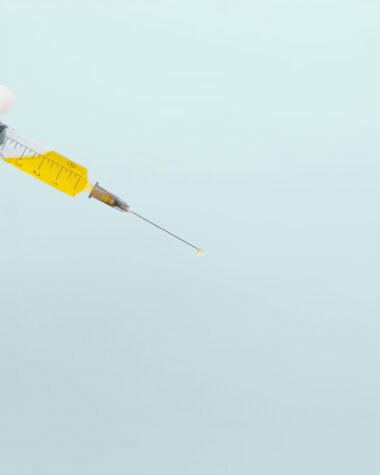Jazz Pharmaceuticals plc (NASDAQ:JAZZ) is a global biopharmaceutical company headquartered in Dublin, Ireland, and listed on the NASDAQ under the ticker symbol JAZZ. Since its founding in 2003, the company has established itself as a key player in neuroscience and oncology, building a reputation for developing and commercializing treatments for serious and often underserved medical conditions. From its early days, Jazz has been defined by its focus on innovation in sleep medicine, particularly with the launch of Xyrem, a breakthrough treatment for narcolepsy, which became the company’s flagship product and helped lay the foundation for its growth into a multibillion-dollar enterprise.
Over time, Jazz has pursued an aggressive expansion strategy through acquisitions, licensing agreements, and internal development. The company has broadened its portfolio beyond sleep medicine into oncology, epilepsy, and rare diseases, positioning itself as a diversified specialty pharmaceutical firm. This transformation has been marked by key milestones such as the acquisition of GW Pharmaceuticals, which brought in Epidiolex, the first plant-derived cannabidiol medicine approved by the FDA. These strategic moves have not only expanded Jazz’s product offerings but also underscored its willingness to take bold steps to remain competitive in the rapidly evolving biopharmaceutical landscape.
Jazz’s commitment to neuroscience remains central to its identity. The company continues to lead in the narcolepsy space with Xywav, a next-generation therapy designed to replace Xyrem as generic competition emerges. Beyond narcolepsy, Jazz is actively investing in treatments for epilepsy and other neurological conditions, highlighting its intent to dominate niche but critical therapeutic areas. Its collaboration with Saniona for the exclusive rights to develop SAN2355, a preclinical Kv7.2/Kv7.3 activator aimed at treating epilepsy, further reflects this strategy of early-stage investment to strengthen its pipeline for the long term.
In oncology, Jazz has also worked to carve out a meaningful presence. Its portfolio includes therapies for hematologic malignancies and solid tumors, with a focus on delivering targeted solutions to patients with limited options. The company has secured accelerated FDA approvals for certain cancer therapies, underscoring its ability to translate innovation into regulatory success, even as safety and efficacy challenges remain a hurdle. These efforts reflect Jazz’s broader mission of improving the lives of patients suffering from life-threatening conditions by developing medicines that address urgent unmet needs.
Despite its accomplishments, Jazz operates in a highly competitive and regulated industry that demands constant reinvention. Its reliance on a handful of core products, the looming risk of generic erosion in its oxybate franchise, and the high costs associated with acquisitions and licensing deals create both opportunities and vulnerabilities. As it balances the challenges of sustaining growth with the ambition to expand its global footprint, Jazz Pharmaceuticals stands as a company emblematic of the risks and rewards of the biopharmaceutical sector.
Mounting Losses Despite Revenue Growth
While Jazz reported modest year-over-year revenue growth in the second quarter of 2025, bringing in over $1.05 billion in sales, the bottom line painted a starkly different picture. The company swung from a $168 million profit in the prior year’s quarter to a staggering net loss of more than $718 million, equating to an $11.74 per share deficit. This sharp decline was primarily driven by a $905 million in-process R&D charge tied to acquisitions, yet it also underscored a broader challenge: Jazz’s growth model is heavily reliant on costly business development moves rather than organic, sustainable product momentum. Missing analyst earnings expectations only added to investor concerns about whether these expensive bets will pay off in the long term.

CHECK THIS OUT: Exact Sciences (EXAS) Just Made Cancer Detection 100x Easier! and Soleno Therapeutics (SLNO): The Biotech Company That Could Make You Rich.
Sluggish Growth Outlook Relative to Industry Peers
Looking ahead, Jazz’s revenue growth is expected to hover around 6% annually, a steep slowdown from its historical double-digit expansion. More concerning, the company’s projected earnings growth is a paltry 1.7% over the next three years—dramatically underperforming the pharmaceutical and biotech sector average of roughly 10%. This trend points to a company that, while still capable of incremental expansion, is no longer keeping pace with the industry it competes in. Investors are increasingly worried that Jazz’s once-dominant market position is eroding as larger pharmaceutical rivals with deeper pipelines and more diversified portfolios gain ground.
Exclusive Licensing of SAN2355: Opportunity or Risk?
On August 20, 2025, Jazz announced an exclusive worldwide licensing agreement with Saniona, a Copenhagen-based biopharmaceutical firm, for the preclinical compound SAN2355. The drug candidate, a subtype-selective Kv7.2/Kv7.3 activator, is being developed for epilepsy and potentially other neurological disorders. Under the deal, Jazz will pay Saniona $42.5 million upfront, with the potential for over $1 billion in milestone and royalty payments should SAN2355 progress successfully through clinical development and commercialization.
On the surface, this agreement fits neatly into Jazz’s strategy of bolstering its neuroscience franchise, particularly in epilepsy where it already has a commercial footprint. However, from a bearish perspective, the move highlights the company’s increasingly risky reliance on licensing early-stage assets to replenish its pipeline. SAN2355 is still in the preclinical phase, meaning it could take years before any human data validates its potential. The majority of drug candidates at this stage fail to make it through clinical development, raising the possibility that this investment could join a long list of costly but unproductive deals in biotech history.
Moreover, the financial commitment is substantial. Saniona stands to receive milestone payments of up to $192.5 million tied to development and regulatory progress, including $7.5 million upon initiation of Phase 1 studies, and as much as $800 million in commercial milestones if sales thresholds are met. This creates a future liability for Jazz that could further strain its balance sheet, especially if other pipeline bets fail or if revenue growth from existing franchises falters.
Dependence on Oxybate Franchise and Patent Risks
Despite efforts to diversify, Jazz’s financial health remains heavily dependent on its oxybate-based narcolepsy treatments, particularly Xywav and Xyrem. While Xywav has been gaining market share, the looming risk of generic erosion and regulatory changes threatens the long-term durability of this revenue stream. The company itself has acknowledged in filings that competitive entrants, changing payor policies, and potential restrictions on controlled substances could materially weaken its largest franchise. Any disruption in this area would significantly affect Jazz’s ability to fund high-cost licensing deals like SAN2355, further compounding investor worries.
Pipeline Setbacks Undermine Confidence
Adding to the uncertainty, Jazz’s broader pipeline has shown mixed results. In mid-2024, the company’s tremor drug suvecaltamide failed to meet its efficacy goals in a Phase 2 trial for essential tremor, a disappointing outcome that sent shares lower. While a Parkinson’s-related trial is ongoing, confidence has been shaken. Even the recent FDA approval of Ziihera (zanidatamab-hrii) for HER2-positive biliary tract cancer came with caveats: over half of trial patients experienced severe adverse events, and long-term durability of benefit remains unclear. These outcomes underscore the risks inherent in Jazz’s current strategy of high-cost acquisitions and in-licensing arrangements to fuel growth.
Intensifying Risk Factors and Regulatory Pressures
The company’s own risk disclosures have ballooned, with more than 40 major risk factors highlighted in its most recent filings, spanning regulatory hurdles, supply chain vulnerabilities, and tariff exposure. This puts Jazz well above the S&P 500 average for risk factor disclosures, signaling heightened exposure relative to peers. The complexity of global drug pricing negotiations, particularly as U.S. Medicare pursues aggressive cost-containment measures, could weigh heavily on Jazz’s future margins. Additionally, the reliance on imported raw materials raises the specter of tariff-driven cost increases that would further compress profitability.
Technical Weakness and Market Sentiment
Beyond fundamentals, technical indicators suggest ongoing headwinds for Jazz shares. The stock recently triggered a MACD “death cross,” alongside bearish candlestick patterns, signaling potential continued weakness in the near term. While technicals are secondary to fundamentals, they do reinforce the cautious sentiment surrounding the stock. Investors are increasingly hesitant to assign premium valuations to Jazz given its uncertain earnings trajectory, patchy clinical outcomes, and overreliance on external licensing.
Conclusion: A Risky Path Forward for Jazz
Jazz Pharmaceuticals’ decision to secure exclusive rights to SAN2355 from Saniona is emblematic of both the company’s ambition and its risk profile. On one hand, the deal demonstrates a commitment to expanding its neuroscience pipeline and potentially strengthening its position in epilepsy. On the other hand, the preclinical stage of SAN2355 makes it a highly speculative bet, layered on top of an already weakened financial performance, slower growth outlook, and pipeline setbacks.
With mounting losses, dependence on a vulnerable oxybate franchise, escalating financial commitments, and increased regulatory pressures, Jazz faces an uphill battle to deliver sustainable shareholder value. While bullish investors may highlight the company’s long-term vision and willingness to invest aggressively in innovation, the current realities suggest that Jazz is more likely to face further volatility and downside risk in the near to medium term. For these reasons, a bearish thesis on Jazz Pharmaceuticals appears not only justified but increasingly compelling.
READ ALSO: Johnson & Johnson (JNJ) can be the Next Trillion-Dollar Stock and Boston Scientific (BSX) Just Signed a $45M Deal—Here’s What It Means for Investors.








